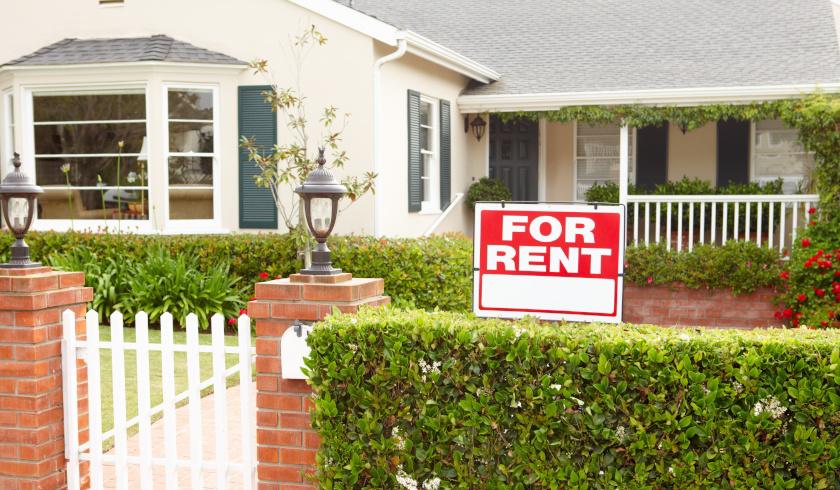Where rents are going somewhere versus nowhere
New analysis by Propertyology has identified the capital cities where changing rental markets are prospering – and where they aren’t.

Propertyology head of research Simon Pressley said a number of locations have seen vacancy rates rise above 3 per cent, noting this is generally considered as a “balanced marketplace”.
“When vacancy rates edge above 3 per cent, rents start to reduce because there is more supply than demand – property prices usually follow suit,” Mr Pressley said.
“Conversely, rents generally start to rise when vacancy rates fall below 2 per cent. This metric is also a back-of-the-beer coaster indication of pressure building within a property market.”
Mr Pressley acknowledged that despite there being a variety of different metrics that provide insights into future property market performance, rental market conditions are a good indicator.
“While a number of factors need to be considered to provide a clearer overall picture, Propertyology believes that current rental trends are showing signs of changing property market cycles in several Australian locations,” he said.
Where rents are going somewhere
According to Propertyology research, Hobart is one to watch when it comes to growth in both rents and property prices.
“Hobart has produced the biggest economic recovery of any Australian city this century,” Mr Pressley said.
“Its labour market has expanded, interstate migration has been strong, and there’s still an exciting pipeline of projects to come. Hobart’s construction sector is unable to keep pace with the extra demand for housing.”
Mr Pressley noted the popularity of Airbnb, and the subsequent transference of stock from the long-term tenancy pool into the leisure and corporate letting pool, has also added to the rental pressure.
“Propertyology anticipates that rising rents and reduced interest rates will trigger an increase in first home buyer activity, thereby further extending the growth cycle within Hobart’s property market,” he said.
“Hobart still has the best overall fundamentals of all capital city property markets.”
Furthermore, Canberra is shaping up to be a strong performer in terms of rental value, according to Mr Pressley, who noted the city’s economy “has benefited from a strong tourism sector and an increase in professional services jobs, and international students”.
“While rental demand looks likely to remain strong in Canberra, new supply – especially apartment stock – may produce a reduction in rental pressure,” he noted.
Where rents are going nowhere
Brisbane’s rental demand was described as “soft” by Mr Pressley, who noted that an underwhelming economy, excess housing stock and low volumes of investment in residential real estate had suppressed the city’s rental market.
“More recently, Brisbane’s reduction in residential construction, combined with an increase in internal migration, which is a by-product of housing affordability pressures in Sydney and Melbourne, has returned Brisbane’s rental market back to equilibrium status,” he said.
“Brisbane’s property supply levels are now supportive of a long-overdue property growth cycle. However, significant price growth will not occur without meaningful, private sector job creation first being produced.”
Melbourne is another Australian capital seeing rents at a standstill, according to Mr Pressley.
“Melbourne’s vacancy rate is currently steady at about 2 per cent, but oversupply (particularly apartments) and affordability pressures, which caused Melbourne (and Sydney’s) property market downturn, still holds some relevance today,” Mr Pressley said.
“While Melbourne’s economy is still strong, the construction industry became overstimulated during Melbourne’s last boom, so beware the wishful thinkers who are hoping for a sustained bounce to Melbourne’s property market.”
Further, Mr Pressley noted Adelaide is presenting an “uninspiring” economy at the moment. Couple this with weak population growth, Mr Pressley says there’s been little increase in rental demand.
“The city’s vacancy rate has stabilised at a low 1 per cent, thereby adding some pressure on rents,” he said.
“However, Adelaide’s current property market fundamentals are a carbon-copy of Brisbane’s – jobs growth is the missing link required to trigger a growth cycle.”
Where rents are going backwards
While Sydney has seen a surge in rental demand, driven by overseas migration, a healthy economy and the high cost of home ownership, Mr Pressley said the harbour city’s rate of rental price growth had consistently eased recently.
He puts this down to record housing construction, “combined with a high volume of extra investment properties being added to the rental pool during Sydney’s property boom”.
“Sydney vacancy rates are now at an all-time record high and rents are declining,” Mr Pressley explained.
“With a sizeable pool of new properties, predominantly apartments, still in Sydney’s construction pipeline, and consistently more Sydneysiders choosing to migrate to other parts of Australia, Propertyology forecasts that Sydney’s rental market will remain soft for some time yet.”
Meanwhile, Perth’s rental market “has been in the doldrums for several years,” according to Mr Pressley.
“Perth’s 10-year trend line highlights the peaks and troughs of Australia’s fourth largest city, with significant population losses to interstate migration producing a reduction in rental demand and falling rents during each of the last four years,” he added.
“While Perth’s residential real estate vacancy rates are still relatively high, they have declined significantly over the past two years.
“A resources-driven economic recovery is already underway, creating optimism that the start of Perth’s next property market growth cycle is on the horizon.”
Darwin is also in the hot seat for backwards rents, with Propertyology research showcasing that the last time property prices in the city increased was back in 2012.
“The Top End’s continued weak economy has culminated in a net annual population loss and Australia’s highest residential real estate vacancy rates,” Mr Pressley said.
“Rents are still declining, although the rate of decline has eased.”

